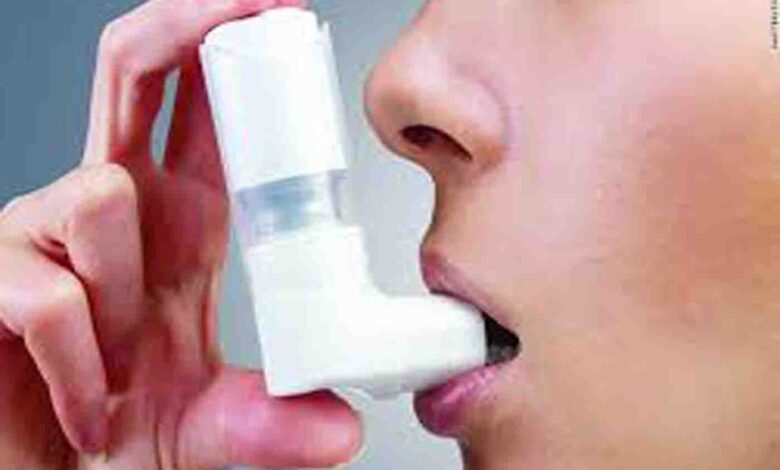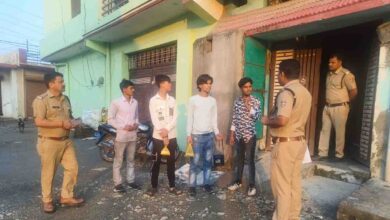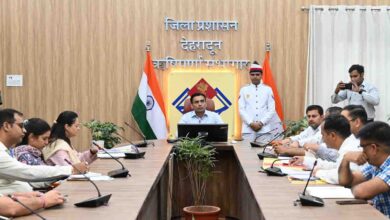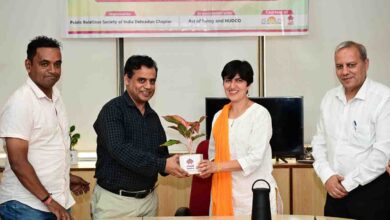Asthma on the rise as Doon’s once clean air worsens

ANUPMA KHANNA | Dehradun
Once known for its clean air, Dehradun is now seeing more and more people struggling with breathing illnesses. Leading doctors here warn that worsening air pollution in Doon is causing an alarming increase in asthma and other respiratory diseases. Unchecked vehicular emissions, rampant deforestation and unregulated construction are posing a serious and growing public health risk in the Doon Valley.
“The number of asthma patients in my practice has nearly doubled in the last ten years,” observes Dr Puneet Tyagi, senior consultant, Respiratory Medicine, Graphic Era Hospital. Dr Rakhee Khanduri, head of Respiratory Medicine at Himalayan Institute of Medical Sciences said that her daily asthma cases have jumped from under five to 15–20 in just five years. At Government Doon Medical College hospital, nearly 100 respiratory patients visit the OPD each day, around 35 of them asthmatic. Asthma cases have noticeably surged over the past six years and continue to rise, the hospital’s head of Respiratory Medicine Dr Anurag Aggarwal said.
Citing the deteriorating air quality as a major factor, doctors also warn that pollution-triggered asthma is increasingly mimicking smoker’s COPD—a chronic lung disease damaging airways—even in young non-smokers. “As per World Health Organization (WHO), five of the top ten leading causes of death globally are lung-related. In Dehradun, vehicular emissions are a major pollutant, and on weekends, the air quality is so poor I can’t even see Mussoorie from my balcony. If we don’t act now to control air pollution, Dehradun could soon end up choked just like Delhi,” Aggarwal said.
Doctors say that while air pollution contributes to asthma, outdoor activity is crucial, especially for allergic asthma. Tyagi explained that limited exposure to allergens increases the risk of asthma, a trend seen more in urban children. Khanduri adds that keeping children indoors to avoid pollution, combined with a lack of public parks, makes them more prone to asthma.
Tyagi further warned of microplastics being a hidden health threat inside homes, not just an environmental issue. “From carpets and curtains to plastic containers and cosmetics, we unknowingly inhale microplastics daily, which can silently damage our lungs over time,” he said.
Dehradun is one of three non-attainment cities in Uttarakhand under the National Clean Air Programme (NCAP).Yet the provisional State capital has only one continuous real-time air quality monitoring station (at Doon University). The other stations at Clock Tower, ISBT, and Raipur are manual and lack the immediacy and accuracy of real-time data.
Asked about this matter, Uttarakhand Pollution Control Board member secretary Parag Madhukar Dhakate told The Pioneer, “Under NCAP, Dehradun received funding for only one such station. It is very expensive and there are no plans to install more CAQMS in Dehradun.” And on the rampant violation of pollution-control norms, he said, “Our role at UPCB is regulatory—we issue directions, but it’s up to other departments to act and enforce them strictly.”
According to founder of SDC Foundation, Anoop Nautiyal, “Dehradun’s air pollution crisis can’t be solved in silos—it needs strong, coordinated action across departments. But that collaboration is missing.” He said that government data for the past five months shows Dehradun’s PM2.5 levels consistently breaching the annual average safe limit of 40 mirogrammes per cubic metre (WHO safe limit is 5 microgrammes per cubic metre). Clock Tower and ISBT crossed 100, while Raipur hovered around 90 microgrammes per cubic metre. “These figures highlight a serious health risk. Lower readings from Doon University, which lies outside the urban core, don’t reflect the city’s true pollution load. We urgently need more continuous monitoring stations so citizens get accurate, real-time air quality information,” he said.
Experts agree that curbing Dehradun’s rising air pollution will take large-scale government action and everyday public effort. However, a major challenge lies in weak enforcement of regulations. Tyagi said, “In places like Europe, construction sites are strictly regulated and must be properly covered to prevent dust from spreading. But here in Dehradun, we’re witnessing unchecked construction everywhere, with little to no enforcement to control dust pollution.”
“There’s a glaring lack of political will—our ministers don’t even acknowledge Dehradun’s air pollution issue. If this kind of unsustainable urbanisation continues, we’re heading toward a point of no return, where the damage to people’s health and the environment could become irreversible,” Nautiyal added.






